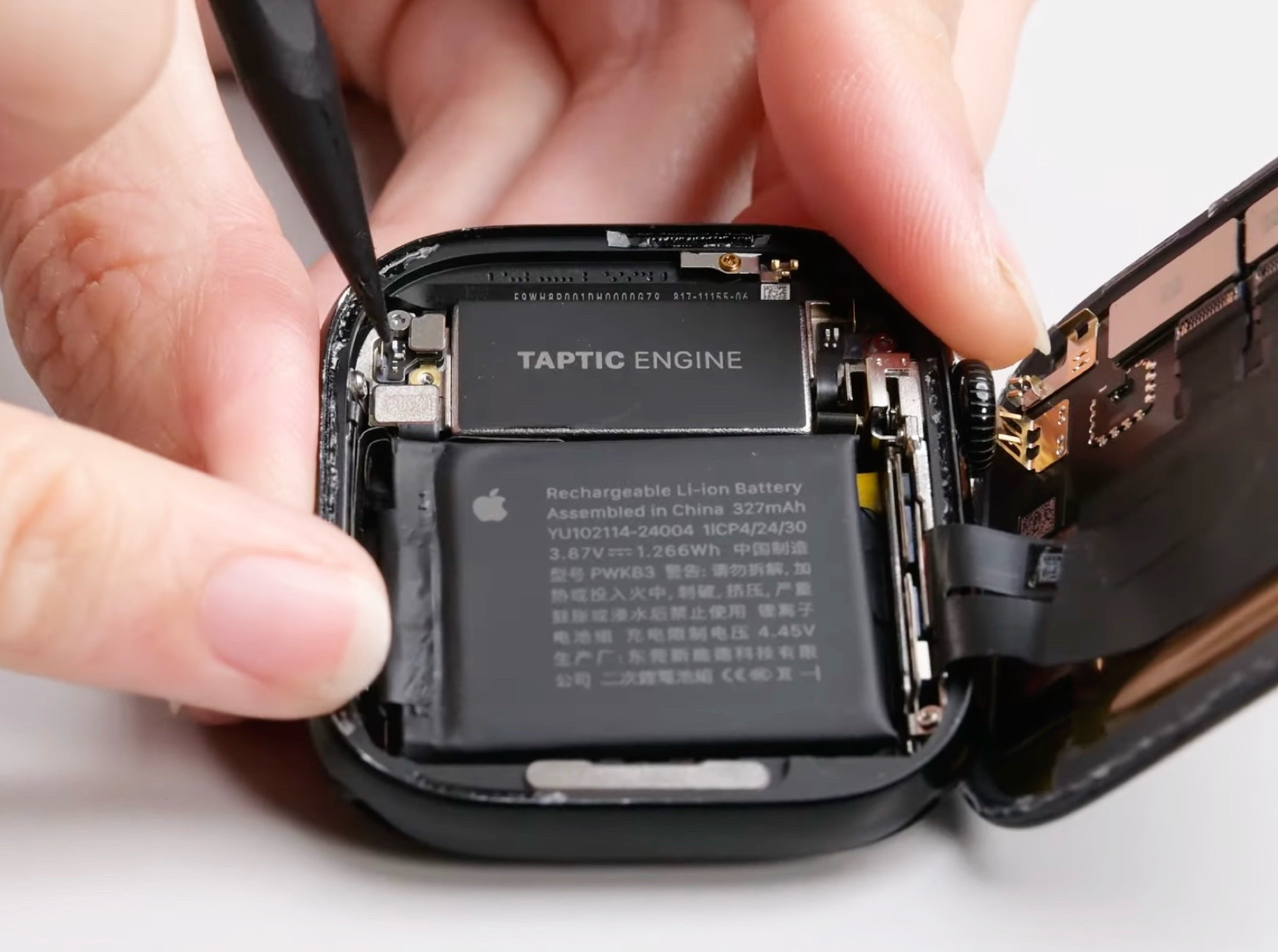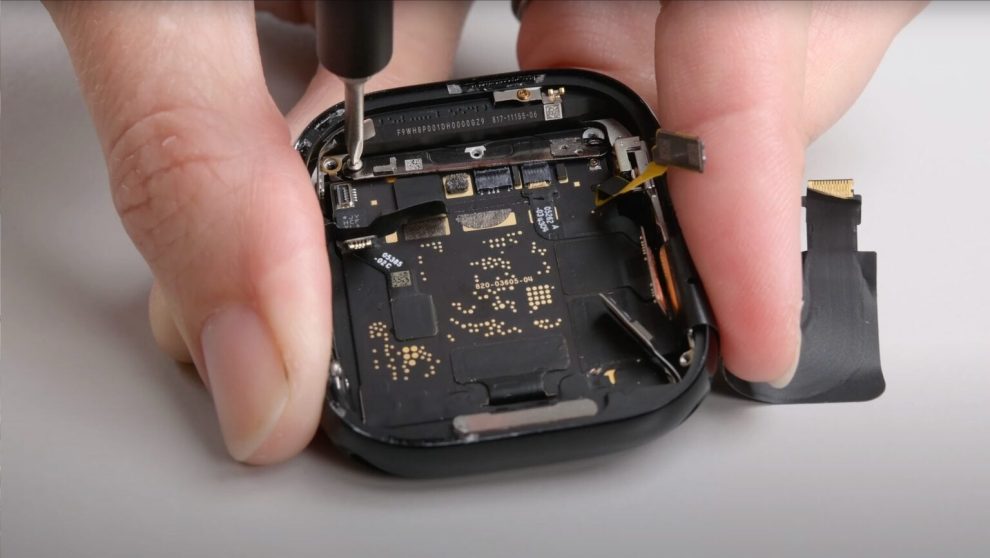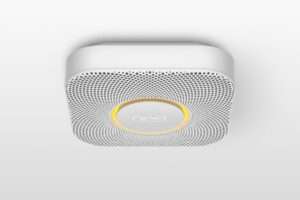iFixit’s Apple Watch Series 10 teardown reveals a 327 mAh battery, large Taptic engine, and difficult repair process, scoring just 3/10 for repairability.
In a revealing exploration of Apple’s latest wearable technology, iFixit has conducted an in-depth teardown of the Apple Watch Series 10. Released just last month, this new iteration of Apple’s popular smartwatch has already stirred curiosity among tech enthusiasts and repair specialists alike. The teardown, focusing on the 46mm model, offers fascinating insights into the device’s internal architecture and raises important questions about the repairability of modern wearable technology.
Cracking the Case
The journey into the Apple Watch Series 10’s innards begins with a formidable challenge. iFixit’s team faced a mere 0.176 mm gap to initiate the opening process. It’s like trying to thread a needle with a boxing glove on,” quips Sarah Chen, lead technician at iFixit. “You need patience, precision, and a steady hand.”
The process involves careful application of heat followed by persistent prying. This delicate operation underscores the intricate design of the watch, prioritizing sleekness and water resistance over ease of access.
Power and Haptics
Once inside, the teardown reveals two dominant features:
1. Battery Capacity: The Apple Watch Series 10 houses a 327 mAh battery, a slight increase from its predecessor.
2. Taptic Engine: Surprisingly large, occupying nearly a third of the space compared to the battery.
“The size of the Taptic engine really caught us off guard,” says Chen. “It’s clear that Apple places a high premium on the haptic feedback experience.”
The battery, while respectable in capacity for a device of this size, is secured with standard adhesive. This choice of attachment method presents both pros and cons for potential repairs.
Sensor Array
Delving deeper into the watch’s internals, the iFixit team encountered a sophisticated array of sensors. These components, crucial for the watch’s health and fitness tracking capabilities, prove to be a significant hurdle in terms of repairability.
The integration of these sensors is impressive from an engineering standpoint,” notes Alex Rodriguez, a wearable tech analyst. “However, this level of integration makes individual sensor replacement extremely challenging.”
Repairability Score
After thorough examination, iFixit awarded the Apple Watch Series 10 a repairability score of 3 out of 10. This low score reflects the numerous challenges encountered during the teardown process.
Key factors contributing to the low score include:
1. Difficult initial access
2. Tightly integrated components
3. Sensor complexity
4. Overall size constraints
While we appreciate the engineering marvel that is the Apple Watch,” Chen explains, “it’s disheartening to see how difficult repairs have become. This trend towards disposability in wearables is concerning from both an environmental and consumer rights perspective.

The repairability challenges of the Apple Watch Series 10 highlight a broader trend in the wearable technology sector. As devices become more compact and feature-rich, they often sacrifice ease of repair.
“This isn’t just an Apple problem,” Rodriguez points out. We’re seeing similar trends across the industry. The question is, at what point does the trade-off between advanced features and repairability become unsustainable?
For consumers, the low repairability score raises concerns about the longevity and sustainability of their investment. With repair options limited, users may find themselves facing full device replacements for issues that could potentially be resolved with simple component swaps.
While Apple has not directly commented on the teardown results, the company has previously stated its commitment to environmental responsibility and product longevity. An Apple spokesperson, speaking on condition of anonymity, shared, “We design our products with both performance and durability in mind. The Apple Watch is built to last, with many users enjoying their devices for years.
However, right-to-repair advocates argue that true longevity comes from the ability to easily maintain and repair devices. “It’s not just about how long a device can last under ideal conditions,” says Maria Reeves, founder of the Tech Repair Initiative. It’s about empowering users to extend the life of their devices through accessible repairs.
As wearable technology continues to evolve, the industry faces a crucial balancing act between innovation, design, and repairability. The Apple Watch Series 10 teardown serves as a stark reminder of the challenges ahead.
The iFixit teardown of the Apple Watch Series 10 offers valuable insights into the state of wearable technology repairability. While the device showcases impressive engineering and powerful features, its low repairability score raises important questions about the future of consumer electronics.
As we move forward, the tech industry must grapple with the challenge of creating devices that are not only cutting-edge but also sustainable and repairable. The Apple Watch Series 10, with its complex internals and repair challenges, serves as a catalyst for this crucial conversation.
For now, users of the Apple Watch Series 10 can marvel at its capabilities while being mindful of its limitations in terms of repairability. As the wearable tech market continues to grow, consumer demand for more repairable devices may yet spark a shift towards more sustainable design practices in future iterations.
















Add Comment